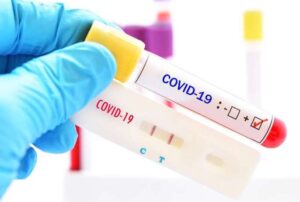COVID testing, logistical challenges and how to address them is a major problem especially in developing countries. Alternative testing protocols that are equipped to allow testing with limited resources will be incredibly useful.


As COVID-19 deaths and hospitalizations keep mounting every passing day, adequate testing has become a pressing issue. Though conversations around “need for adequate testing” have been on the rise in the past few months unfortunately, majority of these conversations do not consider some critical issues around test characteristics, test availability and most importantly, test strategy.
The infrastructure needed to detect SARS-CoV-2 infection that adequately complies with WHO guidelines is lacking across many parts of the globe, especially in developing countries. The problems faced are many and hence, there is an immediate need for the national and international communities to collaborate in the development of novel protocols for rapid detection of COVID-19 to fight effectively against the outbreak.
It is crucial to address the issue
According to a report by Science Direct, while the majority of people with COVID-19 develop a mild illness, around 14% develop severe disease requiring hospitalization, and 5% need ICU support. Inadequate medical facilities to patients in a community can lead to more disease transmission from untreated cases. WHO has strongly recommended testing of both the suspects for COVID-19 and those who have been in contact with them to curb the chances of infection in a community.
However, due to the lack of appropriate resources like testing laboratories and kits, we are facing an increasing number of fatalities while struggling to contain the spread of viruses. The WHO has recommended using a reverse transcription polymerase chain reaction (RT-PCR)-based protocol for testing COVID-19 infection. However, it involves a huge cost as it requires RNA extraction kits, costly RT-PCR machines, and trained technicians to operate them. The establishment of this facility requires huge expertise, investment and time, which are currently limited by the crisis. Alternative testing protocols that are equipped to allow testing with limited resources will be incredibly useful.
Diagnostic testing: a key issue in India
Diagnostic testing is a key agenda of the policy debate around COVID-19 interventions in India. According to the Center for Global Development, as of June 1, 2020, approximately 3.8 million tests had been conducted in India since it began in February. However, considering the size and needs of the population, it is still drastically insufficient. If we compare daily COVID-19 tests in India with other countries, the number is quite low, 0.08 tests per 1,000 people in India against 1.16 in the US and 1.02 in Italy.
Also, the test positivity rate on the same day stood at about 5% which is within the WHO’s recommended rate of <10%. If we look at the scenario at global level, testing inadequacy has hampered the COVID-19 response in the USA, Europe, and Brazil; it may prove to be an even greater challenge in India. The RT-PCR throat/nasal swab test, as recommended by WHO and ICMR, has been the key diagnostic test used in India. However, the central organisation has recently directed states to conduct serosurveys using an IgG ELISAtest which provides information about the history of the infection as against RT-PCR which detects the presence of a live virus.
The rapid antibody tests can help guide isolation policies and better track people who are immune. Currently, 1,00,00 tests are being conducted in the country every day, which the government aims to double but the reality is that even doubling the number, is not sufficient. If we look at the experiences of the USA and Europe, testing needs to be increased by ten times to achieve a meaningful epidemiologic understanding of the prevalence. Such a large-scale increase would put the testing supply chain’s scaling-up ability to the test as there have already been many reports revealing long turnaround time for test reports, shortages in testing supplies and delays in timely notification. Testing can be termed adequate only when there is a proper interpretation of test results and mandated follow-up actions.
Recommended Actions
1. Build a pragmatic testing strategy:


2. Faster turnaround time for testing:
Rapid turnaround time helps in quicker isolation of confirmed cases and contact tracing and also, it provides more up-to-date and reliable data. Improving TAT requires a more careful analysis of the trade-offs involved. TAT should be publicly reported, like the number of tests carried out daily. This would enable faster detection of testing bottlenecks in addition to enabling their proactive resolution.
3.Re-design the supply chain network:
To scale-up the testing capability, it is important to refine the supply chain strategy and determine the optimal product sourcing and inventory deployment rules. Proactively understanding the possible constraints in advance can help in reconfiguring the supply chain before they slow down the whole system.


Dr. Kanav Kahol – CEO
Pink Tech Design,New Delhi











